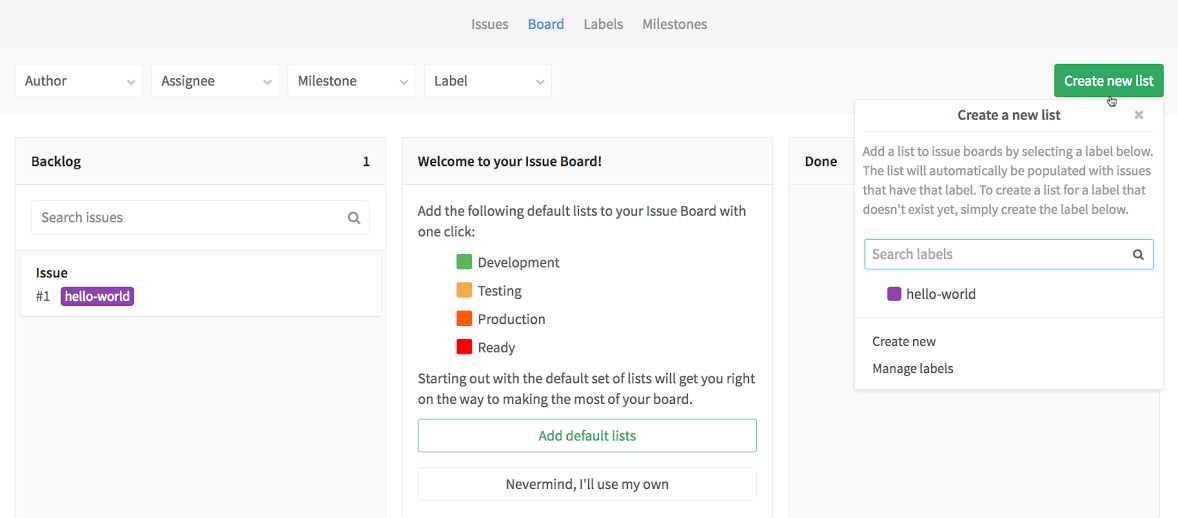
GitLab wants developers to have an easier way to manage and visualize project issues across teams in an organization. Today it released Issue Board, which aims to give developers insight into the development process from start to finish.
Issue Board gives software development teams real-time visibility into all project issues across their organization. It’s an open-source task-management tool that is part of GitLab and available to teams with both free and enterprise versions of GitLab’s code collaboration platform, the company announced.
(Related: GitLab introduces integrated Docker container registry)
According to CEO of GitLab Sid Sijbrandij, GitLab already has the ability to create issues, but there was no way to work with the issues in a collaborative process. With Issue Board, developers have a better visual representation of their issues and the drag-and-drop style makes it more convenient to plan, see what’s in progress, or learn what is backed up and needs attention.
As development teams become more specialized, the collaboration between teams needs to dramatically increase, according to Sijbrandij. He said nowadays, there could be a back-end developer, a front-end developer, a security engineer, a testing team, and an Android or iOS developer who all are working together on one project, so it’s important for teams to be able to see what state an issue is in, he said.
“We want to make sure that you can go as fast as possible from idea to production, and bringing that time down so you can stand on the shoulders of your previous work and have a better grasp of what you have to make next,” said Sijbrandij.
Some key features in Issue Board include lists or columns that represent each step in the development process. The lists themselves are aligned with labels that developers create from existing issues. For example, if a developer labels things with “Backend” or “Frontend,” the corresponding issues will appear in the lists as they are created.
Also, each Issue Board starts with two lists: Backlog and Done. Teams can create unlimited lists. When moving between lists, the label on the issue is automatically updated, and the new issue will be displayed in the issue tracker. This means team members will still have a record of what is happening with one issue even if they aren’t checking Issue Board.
Another important addition with this month’s release is the coding integration feature. After a developer plans an issue, the next thing they should do is begin working on it. With GitLab, said Sijbrandij, developers can begin by clicking one button that will allow their whole development environment to be installed, so they can get working on the issue right away instead of waiting a day installing all the dependencies on their local machine.
Issue Board also allows teams to see the entire flow of their processes from the moment something is discussed for the first time until it is deployed.
“We think that will help teams coordinate more easily and spend more time on writing software than writing all kinds of integrations to make their tools work together,” said Sijbrandij.






